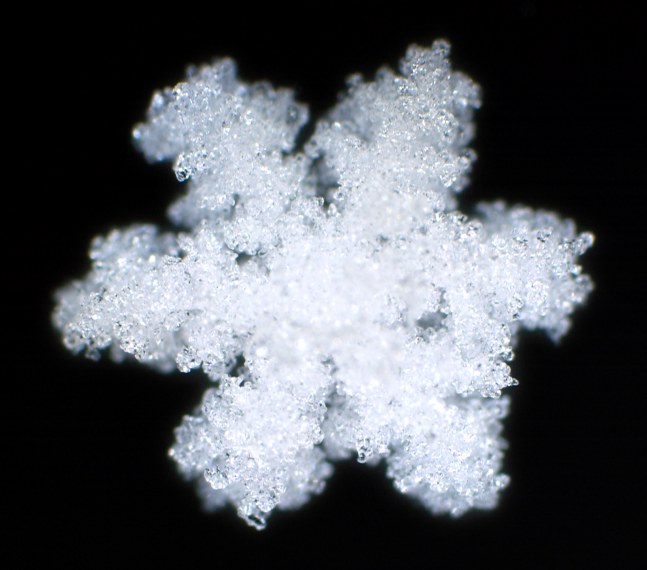Graupel
Graupel (also called snow pellets) refers to precipitation that forms when supercooled droplets of water condense on a snowflake, forming a 2–5 mm ball of rime ice; the snowflake acts as a nucleus of condensation in this process. The term is derived from German.
Under some atmospheric conditions, forming and descending snow crystals may encounter and pass through atmospheric supercooled cloud droplets. These droplets, which have a diameter of about 10 µm, can exist in the unfrozen state down to temperatures near -40°C. Contact between the snow crystal and the supercooled droplets results in freezing of the liquid droplets onto the surface of the crystals. This process of crystal growth is known as accretion and may happen in the clouds or when there is freezing fog. Crystals that exhibit frozen droplets on their surfaces are referred to as rimed. When this process continues so that the shape of the original snow crystal is no longer identifiable, the resulting crystal is referred to as graupel

The series is based on the 1951 International Commission on Snow and Ice classification system. The commission produced a fairly simple and widely used classification system for solid precipitation. This system defines the seven principal snow crystal types as plates, stellar crystals, columns, needles, spatial dendrites, capped columns, and irregular forms. To these are added three additional types of frozen precipitation: graupel, ice pellets, and hail. The classification is the least complicated in a series of snow classification systems. The most complex classification scheme, an extension of Ukichiro Nakaya's work, was published by meteorologists C. Magono and C. W. Lee in 1966. Their system included 80 different snow crystal types. Twenty years ago I used the international classification in an Independent Physics Field Study where I observed snowflakes for the winter and developed correlations with surface and lower atmospheric conditions. Today, the classification system is used here to find structures in nature that look similar to the snow referenced in the cache name.